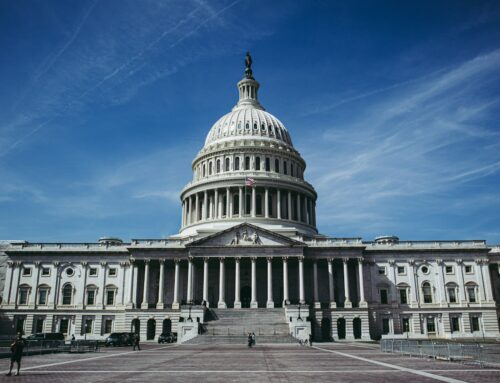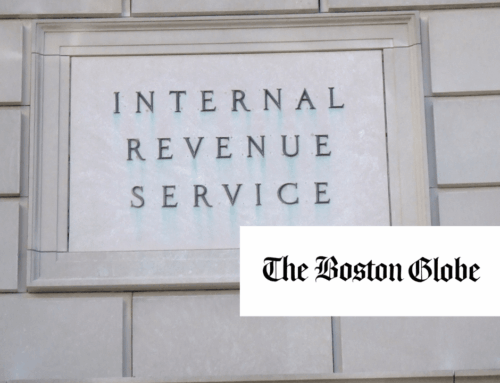View/Download this article in PDF format.
Fresh off their $1.1 trillion CROmnibus high, the Senate approved a bill providing dozens of tax breaks to special interests. The tax extenders package, H.R. 5771, passed by the House on December 3rd, revives supposedly “temporary” tax carveouts that expired at the end of 2013. It’s a prime example of Congress’ inability to make tough spending decisions.
While the bill only extends the provisions through end of 2014 at an estimated cost of more than $81 billion for the first year (2015), the tax extender package is routinely passed one or two years at a time, making the “temporary” provisions effectively permanent.
One notable difference this year is that the package of tax carveouts is being adopted as stand-alone legislation. Tax extenders have a history of attaching themselves to much bigger, more important legislation, including the deal to avert the fiscal cliff in 2012, the 2010 extension of the Bush tax cuts, and the bank industry bailout in 2008. One thing that’s not different is Congress’ failure to offset the $81 billion increase in the deficit with corresponding revenue increases or spending cuts.
It is also important to note that the price tag for each of these will be much higher than officially estimated as Congress continues to “temporarily” extend them year after year into the future. In fact, the oft-cited $42 billion cost is the bill’s ten year score that assumes the provisions will expire in just two weeks. Considering they will cost almost twice that much in just the first year, it’s a significant underestimate of their long-term cost.
Of the 50+ provisions in the package, here are the top 10 cherries Congress put on the gluttonous CROmnibus:
1. Seven Year Straight Line Cost Recovery Period for Motorsports Entertainment Complexes
Undercutting IRS rulings to the contrary, owners of motorsports entertainment complexes (aka NASCAR tracks) are able to write off the cost of their facilities on their taxes over seven years—instead of the standard 39 years for nonresidential property and 15 years for “improvements” (such as fences and roads)—as long as the venue hosts an event within three years of its completion. Such an accelerated depreciation schedule increases the value of the yearly deduction for owners. Track owners have also gotten plenty of other tax breaks over the years from states and localities eager to get speedways. The provision encompasses all facilities including grandstands, parking lots, and concession stands.
Estimated cost in Fiscal Year 2015: $11 million
2. Extension of classification of certain race horses as 3-year property
The 2008 farm bill temporarily reduced the cost recovery period from seven years to three years for race horses that begin training when older than two years of age. This provision extends this three year recovery period to all race horses in spite of a U.S. Treasury study that determined race horses have an economic life of nine years when one accounts for post-career breeding and resale value. The provision primarily benefits investors in race horses, rather than breeders who race their own horses and can deduct the cost of breeding.
Estimated cost in Fiscal Year 2015: $74 million
3. Special Expensing Rules for U.S. Film and Television Productions
In an effort to keep film and television production in the United States, filmmakers have the option of immediately deducting significant costs for most film or television productions. Under this provision, producers can elect to expense the first $15 million of production costs incurred in the U.S. in the current year ($20 million if the costs are incurred in economically depressed areas in the U.S.). It can be claimed if at least 75 percent of the costs are for services performed in the U.S., and is available for both blockbusters and those that go “directly to video cassette or any other format.”
Estimated cost in Fiscal Year 2015: $245 million
4. Research & Development Tax Credit
A lucrative tax credit is available for companies doing research and experimentation in the United States. This tax credit, which has an inordinately broad definition of “research,” generally goes to larger corporations. Companies that have benefited from the provision in the past include Microsoft Corp., Boeing Co., United Technologies Corp., Electronic Data Systems Corp. and Harley-Davidson.
Estimated cost in Fiscal Year 2015: $3.786 billion
5. Bonus Depreciation: Additional First-year Depreciation for 50 percent of Basis for Qualified Property
Instead of writing off costs of equipment over many years on a depreciation schedule, bonus depreciation allows fifty percent of the cost of equipment purchased in 2014 to be deducted immediately, with the remaining cost deducted over time. Bonus depreciation is purportedly used to stimulate the economy in an economic downturn, though the Congressional Research Service has reported that several studies have found it has little effect and surveys have shown that between two-thirds and more than 90 percent of firms say it has no impact on purchasing decisions. Including bonus depreciation in extenders yet again makes it appear that instead of being used as a stimulus, the provision is intended to be “permanent.” Estimate includes interaction with Section 179 expensing.
Estimated Cost in Fiscal Year 2015: $45.3 billion
6. Temporary Increase in Limit on Cover Over of Rum Excise Tax Revenues to Puerto Rico and the Virgin Islands
The bill extends the provision increasing the excise tax cover over payment to $13.25 per proof gallon for rum distilled in Puerto Rico and U.S. Virgin Islands. For many years, rum imported to the U.S. was subject to a $10.50 excise tax per proof gallon. For deficit reduction purposes, the excise tax was increased in 1985 and again later to its current level of $13.50. Under long-standing U.S. law, Puerto Rico and the U.S. Virgin Islands (USVI) are entitled to a $10.50 “cover over,” or rebate on the excise taxes. The U.S. has routinely extended a “temporary” additional cover over of $2.75 (total $13.25), leaving only 25 cents going into the U.S. Treasury. The provision’s main beneficiaries are the liquor companies Diageo and Bacardi; much of the rebated excise tax is given to the companies as an economic incentive. In fact, the USVI is using their future cover over payments to back bonds used to build Diageo (the Britain based world’s largest liquor conglomerate) a new distillery to induce it to shift Captain Morgan production from another U.S. territory, Puerto Rico.
Estimated cost in Fiscal Year 2015: $168 million
7. Extension of American Samoa Economic Development Credit
In general, this credit allows certain corporations operating in American Samoa to offset a portion of their U.S. tax liability on income earned in American Samoa from active business operations, sales of assets used in a business, or certain investments in American Samoa.
Estimated cost in Fiscal Year 2015: $14 million
8. Incentives for Alternative Fuel and Alternative Fuel Mixtures
Both the alternative fuel credit and the alternative fuels mixture credit were enacted by the 2005 Highway Bill to provide a tax break for alternative fuels, which include high carbon fuels produced from coal, oil shale, and tar sands as well as liquefied natural gas and liquefied hydrogen. Companies that produce unconventional fuels receive a production tax break of 50 cents per gallon; companies that blend traditional fossil fuels with small amounts of high carbon fuels receive the same tax benefit.
Estimated cost in Fiscal Year 2015: $397 million
9. Alternative Fuel Vehicle Refueling Property (non-hydrogen refueling property)
Facilities dispensing certain alternative fuels receive a refueling property credit. This provides a 30% tax break for gasoline stations or other facilities installing biodiesel or 85% ethanol (E85) blender pumps or repowering sites for electric vehicles. Stations dispensing natural gas, liquefied natural gas (LNG), and liquefied petroleum gas (LPG) are also eligible. The credit was first passed in the 2005 energy bill.
Estimated cost in Fiscal Year 2015: $38 million
10. Deduction of State and Local General Sales Taxes
This provision was eliminated from the tax code in the 1986 reforms, but was brought back to life in recent years. It enables taxpayers the option of deducting itemized state and local sales taxes from federal income tax, but only if they do not deduct state income tax. Therefore, the major beneficiaries are the residents of states that don’t have state income tax: Alaska, Florida, Nevada, South Dakota, Texas, Washington, and Wyoming.
Estimated cost in Fiscal Year 2015: $2.924 billion











Get Social